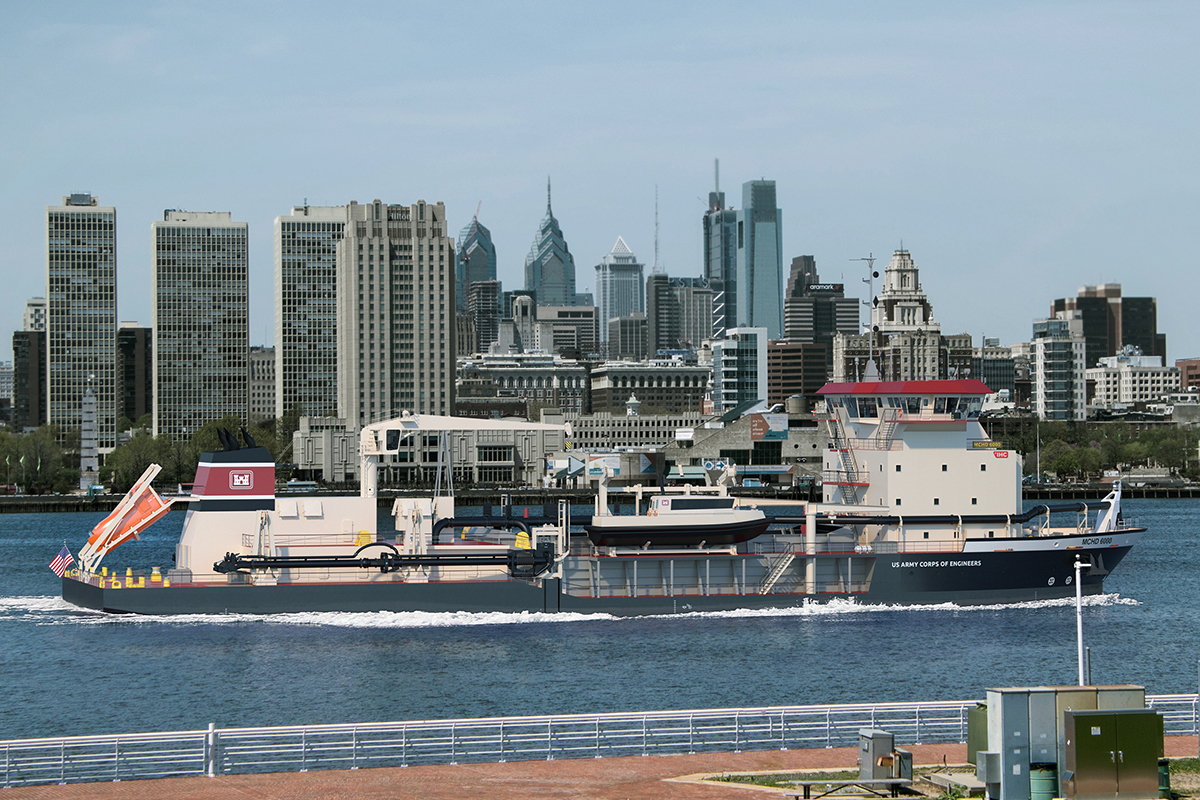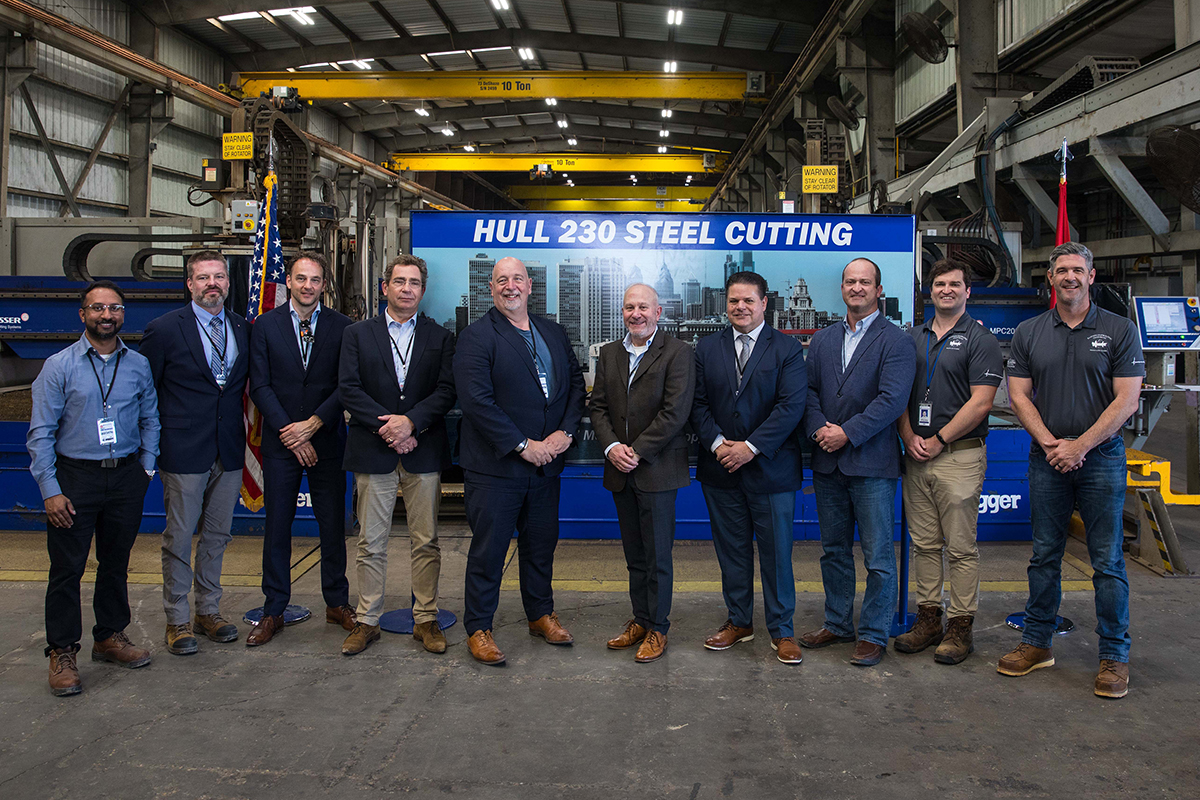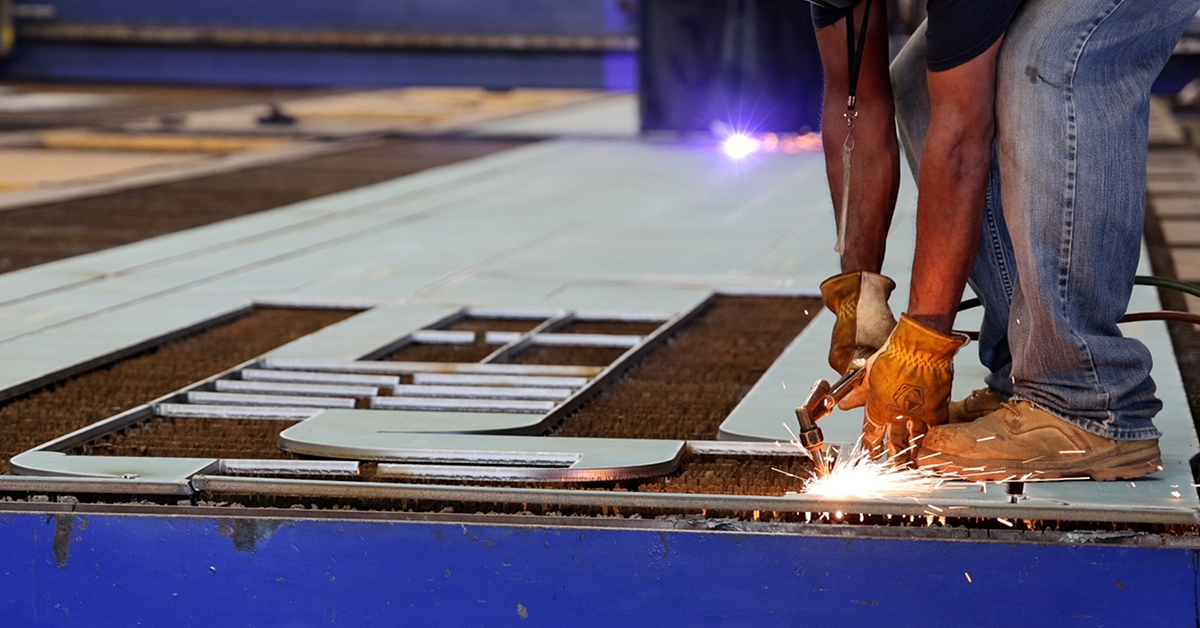Panama City, Fla.-based Eastern Shipbuilding Group (ESG) has cut steel for the new medium class hopper dredge the shipyard is building for the U.S. Army Corps of Engineers. The shipyard held a ceremony April 4 to mark the milestone, with representatives in attendance from Corps headquarters, the North Atlantic Engineer Division, the Corps’ Marine Design Center, the Philadelphia Engineer District and Royal IHC.
“The steel cutting of this highly advanced hopper dredge marks another milestone in Eastern Shipbuilding Group’s legacy of delivering world-class vessels,” said Joey D’Isernia, the shipyard’s CEO. “We are proud to partner with the U.S. Army Corps of Engineers and Royal IHC to build a state-of-the-art dredge that will enhance our nation’s waterway infrastructure. Our team is committed to executing this program with the highest standards of quality, efficiency and innovation.”
Eastern Shipbuilding is constructing the forthcoming dredge at its Allanton, Fla., and Port St. Joe, Fla., facilities. The dredge, which will replace the 57-year-old dredge McFarland, is scheduled for delivery in 2027. The new dredge will homeport at the Philadelphia District and will be part of the Corps’ ready reserve fleet of dredges.
“This new dredge is going to play a critical role in helping us deliver our navigation mission, which enables maritime commerce to flow on our nation’s waterways,” said John Primavera, regional business director of the North Atlantic Division. “This strengthens our economy and supports our national security. USACE hasn’t built a deep-draft hopper dredge in about 45 years. We’re proud to recognize this milestone and look forward to continued partnership with the shipbuilding industry and progress on the construction of this vital ship.”

Eastern is collaborating with Royal IHC on the design of the dredge, which will measure 320 feet by 72 feet, with a hull depth of 28 feet. With the hopper empty, the dredge will have a draft of 11 feet, 3 inches. Fully loaded, the vessel will draft 25 feet, 6 inches. The maximum air draft of the new dredge will be 110 feet.
According to the shipyard, the dredge will be able to fill its 6,000 cubic yard capacity hopper with medium-fine sand in less than 45 minutes, up to 15 percent more efficiently than the outgoing McFarland. The new dredge, which will have a working depth range of between 35 and 65 feet, will be able to discharge in almost half the time as the McFarland. The vessel will feature Royal IHC’s “ECO Control Package” for high-end controls for trail speed, the dredge pump and the drag head’s “vizor.” It will also be equipped with Royal IHC’s “Dredge Assist” program which will allow semi-autonomous operation with “minimal human interaction to complete tasks,” according to Eastern Shipbuilding Group.
“We are proud to see our design with the most advanced dredging technology come to life during this exciting milestone,” said Leo van Ingen, North American sales director for Royal IHC. “Exceeding the USACE’s mission-based operational requirements and featuring one of the most advanced configurations ever developed by Royal IHC, this project marks a significant step in our collaboration with USACE and ESG. This groundbreaking hopper dredge will set new standards in efficiency, automation and sustainability.”

The propulsion system aboard the new dredge will be diesel-electric, with three main generators that will meet EPA Tier 4 and IMO Tier 3 emissions standards.
The Philadelphia District first released draft solicitation documents for the project in January 2022. The contract award, valued at just under $257 million, was announced July 24, 2023.
Besides the McFarland, the Corps’ minimum fleet of hopper dredges also includes the Essayons, the Yaquina and the Wheeler. The Essayons and the Yaquina, commissioned in 1983 and 1981, respectively, work on the West Coast as part of the Portland Engineer District. The Wheeler, built in 1982, is part of the New Orleans District and primarily serves the Gulf Coast region. The McFarland, and by extension its forthcoming replacement, operates from the Delaware River and Bay and the East Coast around to the Gulf, including the Mississippi River Ship Channel’s Southwest Pass.
The Corps set a minimum transit speed for the new dredge of 12 knots when empty and 10 knots with the hopper full. That’s to meet the requirements of the dredge’s ready reserve status, which calls for the ability to respond to any critical dredging needs within its area of responsibility within 72 hours.
Featured image caption: An Eastern Shipbuilding Group welder cuts steel to ceremonially begin construction of a medium class hopper dredge, which the shipyard is building for the U.S. Army Corps of Engineers. (Photo courtesy of Eastern Shipbuilding Group)



